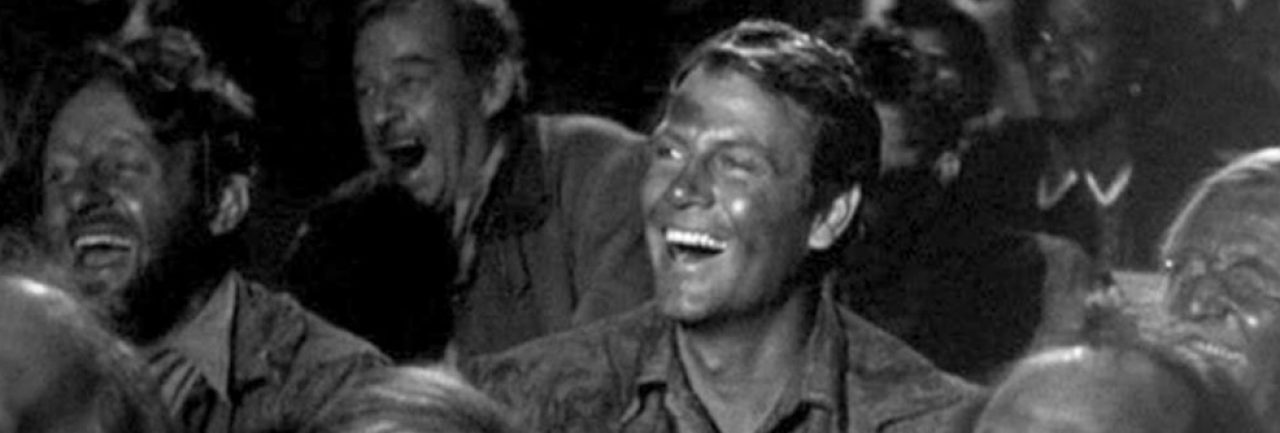I believe this is the second example in the blog — after Home Alone — of a movie that includes both a real film and a fictional one. And it’s fitting that it follows Buster Keaton’s Sherlock Jr., since that was an obvious inspiration for Woody Allen’s The Purple Rose of Cairo (1985).
One difference is that in Sherlock Jr., the projectionist played by Buster steps into the movie being screened in his theater. Purple Rose of Cairo goes the other way. Set in the Depression, it’s about an unhappy waitress and wife named Cecilia (Mia Farrow) who goes to the movies to escape her woes. She develops a fascination with The Purple Rose of Cairo, a (fictional) RKO madcap melodrama centering on a dashing archeologist named Jeff Baxter (Jeff Daniels). She sits through multiple showings, until something very strange happens (at about the two-minute mark of this clip) …
One of the cool things about the sequence is how Allen, famously a movie buff, has captured the look and sound and feel of ’30s films, and chosen actors who fit seamlessly in: John Wood (who could almost be a stand-in for Edward Everett Horton), Edward Herrman, Debra Rush, and Annie Jo Edwards as Delilah, the maid. (The part is a sadly accurate depiction of the sort of roles played by Hattie McDaniel and others, but so distasteful today that I wish Allen had left it out.)

Cecilia shows Tom around her New Jersey town, and he — a la Sherlock Jr. — takes her into the film. A cuckoo love triangle ensues involving Cecilia, Tom, and the actor who plays Tom, Gil Shepherd. She chooses Gil (not much future in a romance with a celluloid hero) but gets some bad news as she approaches the theater. (She’s carrying the ukulele because she and Gil have had some great fun dueting.) So she goes in and takes a seat to see the movie that’s just opened, a true-life RKO production, Astaire and Rogers’s Top Hat.
You can see for yourself the effect this transcendent piece of entertainment has on Cecilia. It harks back to the very first film discussed in this blog, Sullivan’s Travels, and in its honor I’ve created a new tag for both movies (and a couple of others): The Transporting Power of Popular Film.
